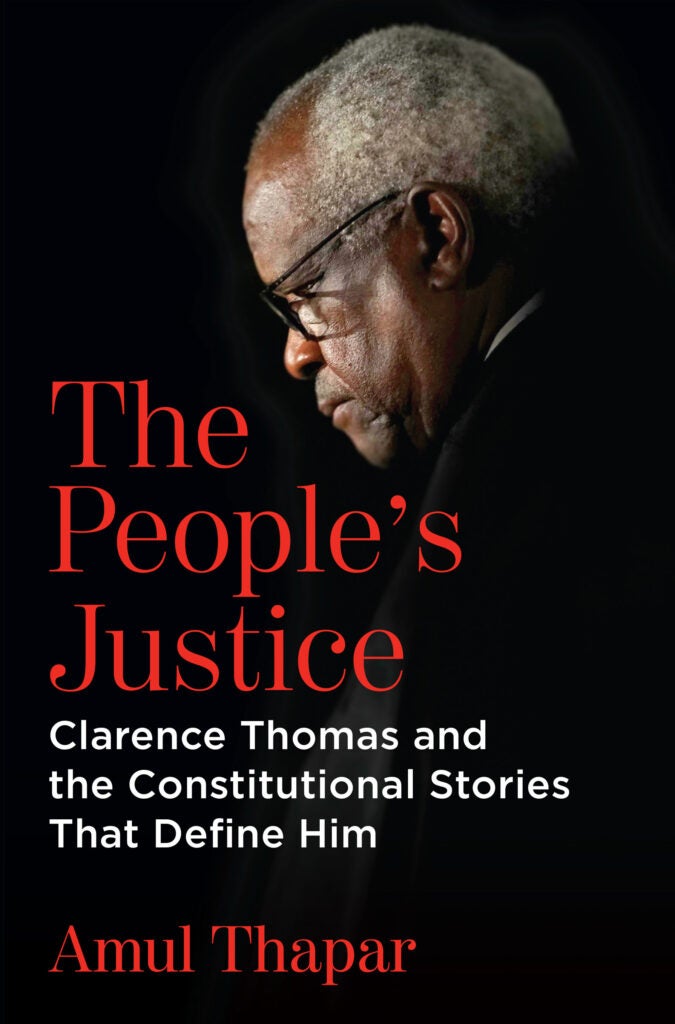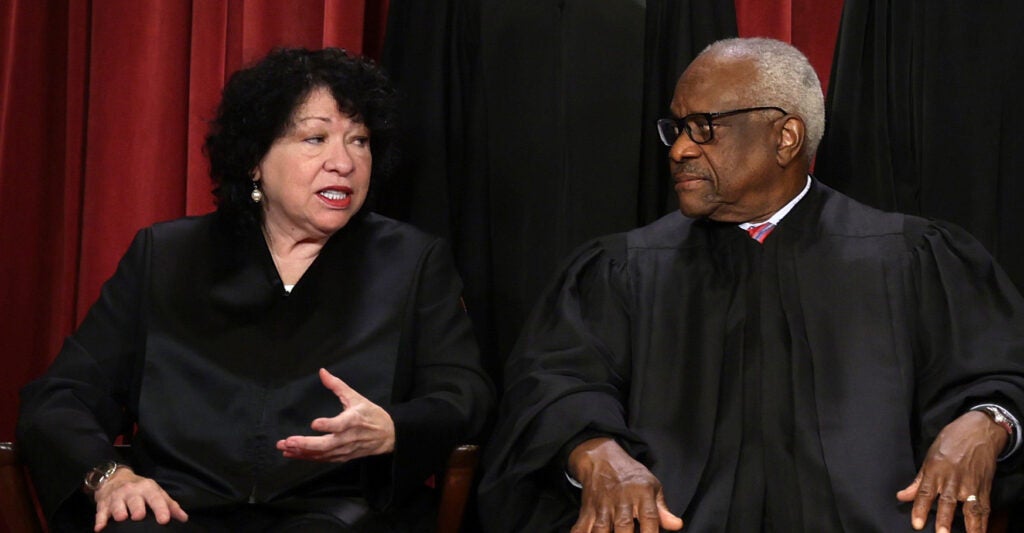‘The People’s Justice’: New Book Demolishes Left’s Caricature of Clarence Thomas
Amul Thapar /
The following is a lightly edited excerpt from “The People’s Justice: Clarence Thomas and the Constitutional Stories That Define Him” by federal appeals court Judge Amul Thapar, set for publication June 20.
Justice Clarence Thomas walked out of church after daily Mass on a crisp, clear morning in the fall of 1998. He descended the granite steps of St. Joseph’s Church on Capitol Hill in Washington, D.C., and began his walk back to the Supreme Court, when a homeless man came running toward him. “Justice, Justice, I got another petition coming to you,” the man yelled.
Nicole Garnett, one of Thomas’ law clerks, who had joined Thomas at St. Joe’s, tensed. But the justice did not. Instead, he walked toward the man and soon became immersed in conversation. Nicole couldn’t hear what the man was saying, but he was certainly animated. The justice listened patiently, like he always did.
After a few minutes, Thomas and the man concluded their conversation, and the justice rejoined the group of Supreme Court clerks on the church steps. “You know,” he said, “these are hard days for him. Last week was the anniversary of his mother’s death.”
Thomas, it turned out, had known the homeless man for some time. When the two first met, the man had been addicted to drugs, and sadly, that addiction had driven a wedge between him and his mother. But over time, the justice had convinced the man to get clean, and in the process, he had reconciled with his mother before she passed.

To Garnett, this story was more proof of what she and many others close to the justice already knew: Thomas cares about people. His clerks aren’t the only ones who notice this about him. One of his colleagues on the Supreme Court, Justice Sonia Sotomayor, recently described Thomas this way: “Justice Thomas is the one justice in the building that literally knows every employee’s name, every one of them. … [H]e is a man who cares deeply about the court as an institution, about the people who work there—about people.” …

Today, few dispute that Thomas is one of the greatest originalist jurists ever. But sadly, stories like this, which show Thomas’ true character, are rarely told. Nor are the stories of the people whose cases have come before him.
That is the purpose of “The People’s Justice: Clarence Thomas and the Constitutional Stories That Define Him”—to tell you what few others will; to give a face and a voice to those whose lives have been changed forever by the many cases that have come before the Supreme Court; to show how Thomas champions our Constitution and the people it protects.
In the pages of “The People’s Justice,” you’ll learn of the quiet dignity of people like Susette Kelo, who fought to keep her beloved house when the government and a big corporation partnered to take it from her. You’ll meet the Cleveland parents who wanted their children to have access to effective education in safe schools. You’ll learn about Angel Raich’s valiant fight to keep big government out of her medical treatment.
You’ll see how the people of Chicago battled to take their neighborhoods back from violent gangs. You’ll read about football star Warrick Dunn, who struggled to keep his family together after the brutal murder of his mother. And you’ll learn about cross-burning Klansman Barry Black—and David Baugh, the black lawyer who defended him.
In these cases, you will also see how Thomas, applying originalist principles of jurisprudence to the cases before the Court, responds to the struggles of everyday Americans.
By cherry-picking his opinions or misrepresenting them, Thomas’ critics claim that his originalism favors the rich over the poor, the strong over the weak, and corporations over consumers. They have called Thomas “the cruelest Justice,” “stupid,” and even “an Uncle Tom,” a traitor to his race.
But as you’ll see in these pages, Thomas’ originalism more often favors the ordinary people who come before the court—because the core idea behind originalism is honoring the will of the people.
Originalists believe that the American people, not nine unelected judges, are the source of the law that governs us, through the Constitution and statutes enacted by our elected representatives. The judge’s role is to determine what the words of those documents meant when they were enacted and to apply them to the cases in front of him or her. Nothing more, nothing less.
As an originalist, Thomas is committed to applying the law equally to all, come what may. Sometimes, that will mean that the less sympathetic party triumphs. But more often, the opposite is true.
Reading these gripping stories, you will see for yourself what his originalist jurisprudence has to say about race, about corporations, and about the poor and downtrodden. You will see firsthand what originalism means in practice and what it has to offer the least privileged Americans. And I guarantee you, whatever you think you know about Thomas and about originalism, something in this book will surprise you.
The Daily Signal publishes a variety of perspectives. Nothing written here is to be construed as representing the views of The Heritage Foundation.
Have an opinion about this article? To sound off, please email [email protected] and we’ll consider publishing your edited remarks in our regular “We Hear You” feature. Remember to include the url or headline of the article plus your name and town and/or state.
